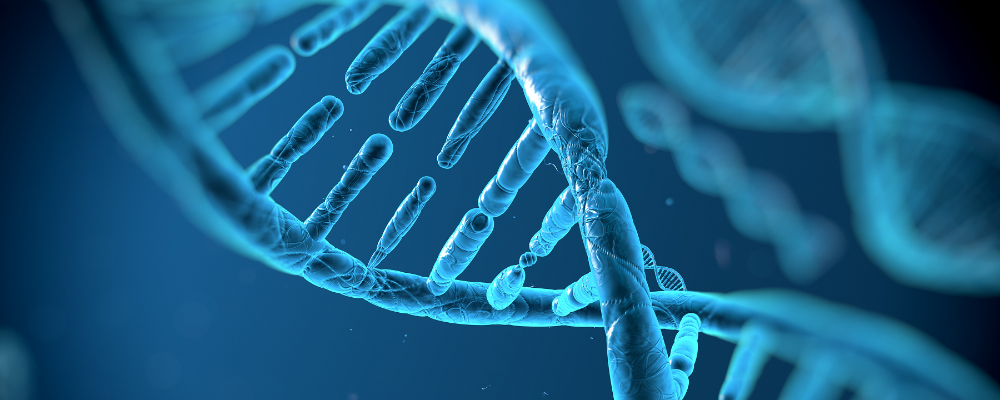
Purpose of gDNA Extraction & Tips For Success
When learning about gDNA, a frequent question that comes up is ‘what is the purpose of gDNA extraction?’
The Purpose of gDNA Extraction
Genomic DNA (gDNA) extraction is one of the most ubiquitous procedures performed in the life sciences. gDNA contains all the genetic, chromosomal material of an organism and it encodes all the components necessary for life. The purpose of gDNA extraction is to separate this genetic material from the rest of the cell (proteins, RNA, cell membrane, etc.). Once purified, scientists can study individual genes, sequence the entire genome, modify sections of DNA, and more.
However, all of these downstream applications begin with the genomic DNA purification. Therefore, it’s important to make sure that these you are getting the highest quality DNA. That’s why we compiled a list of the best tips for gDNA purification.
How to Get More From gDNA Extractions
More or Less Sample
Each sample is unique and varies in levels of DNA. Some sample types (e.g. muscle tissue), contain low amounts of DNA while others (e.g. nucleated blood) is bursting with excess DNA. It becomes good practice to follow the guidelines for sample loading as too much sample can cause clogged columns affecting kit performance. Sometimes less is more!
Sample Types for gDNA Extraction
The first step of any gDNA extraction is to lyse the cells in order to break the cell membrane and release the contents. It is crucial that the lysis step is performed to completion. Improper lysis can greatly reduce yields (since the DNA is trapped within the cells) or reduce purity (as excess cellular debris can leech salts). To ensure the best lysis conditions, consider the sample type that you are starting with.
Cells & Biological Fluids
- Cells and biological fluids (blood, semen, saliva, milk, etc) are generally straight forward, requiring a quick proteinase K digestion at 55°C. If the sample is completely homogeneous after digestion, you should be good to go!
Tissue
- Since tissue is a 3D solid matrix, it requires a more intense lysis procedure. The fastest way to digest tissue is to cut up the sample (as small as possible) to increase the surface area. This allows more space for the proteinase K to break apart the small sections of tissue. Doing this will greatly speed up digestion time so you don’t have to incubate overnight.
Slow and Steady
When it comes to gDNA extraction, one of the best tips is to operate at a pace you feel most comfortable with. Whether it’s removing spin columns and placing into new collection tubes or washing with the correct buffer, handling plays a huge role in DNA extraction performance.
Best Tips for Pure Eluates
Most binding buffers contain salts. If they get into the eluate, it dramatically reduces the 260/230 ratios and results in impure preps. There are several methods that you can try to help reduce the amount of salt contamination in your final DNA eluate.
- ○ Ensure that you are using the proper centrifugation speeds to remove these salts completely from the column and matrix.
- ○ Prevent splash back and salt contamination by thoroughly washing the columns with the ethanol wash buffers. We recommend running the pipette tip along the wall of the column to flush all the salts out.
- ○ If you are using capped columns, try inverting the closed columns during the wash steps to remove any trace salts that may have splashed onto the cap.
- ○ Be sure to mind the tip of the column. Do not let it touch any of the binding buffers. For those wanting to be especially cautious, we recommend using a new collection tube with each wash.
- ○ Do not let the elution buffer touch any part of the column except the matrix. If it does, you run the risk of picking up any trace amounts of salts that may not have washed off.
Finish Strong- Get more DNA back in the Eluate
The elution step is the one of the most critical in the entire workflow. At this step, you will need to decide between yield or concentration. More DNA yield can be recovered with a larger elution volume. However, if you want a very concentrated sample, your overall DNA yield will be less. Keep this in mind before adding your elution buffer onto the column.
Heating the elution buffer to 55°C can help to increase the elution efficiency.
Secret tip – Reload the eluate back onto the column to get any leftover DNA that might be on the column. Then incubate for 5 minutes and spin through for a second elution. This can increase the yield by up to 5% depending on the sample.
DNA Recovery From Biological Fluids & Tissue – Tips
High-quality DNA can be recovered from biological fluids and tissue alike by remembering these gDNA extraction tips:
- ● Proper sample volume
- ● Complete lysis
- ● Proper sample volume
- ● Elution conditions
- ● Mitigating procedural errors
Extracting DNA can be tough, but hopefully these tips and tricks help you make the most of your gDNA preps.
Premiere Purification
For the easiest way to purify high-quality, ultra-pure DNA from any sample, be sure to try the Quick-DNA Miniprep Plus kit. Keep these important suggestions in mind before using the kit to be confident that you are getting the best genomic DNA possible for all your downstream assays.

